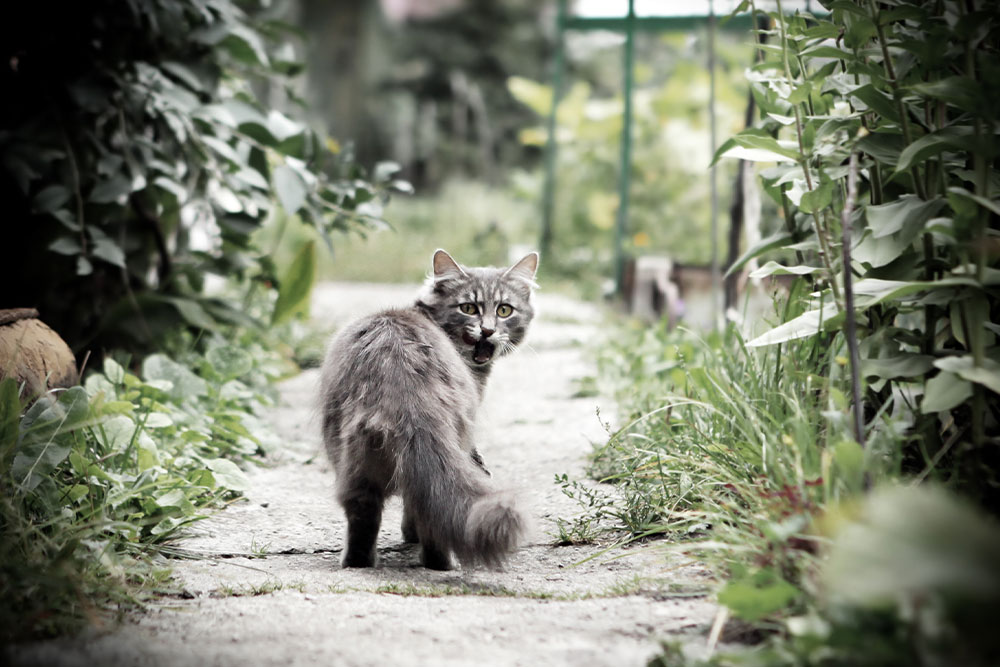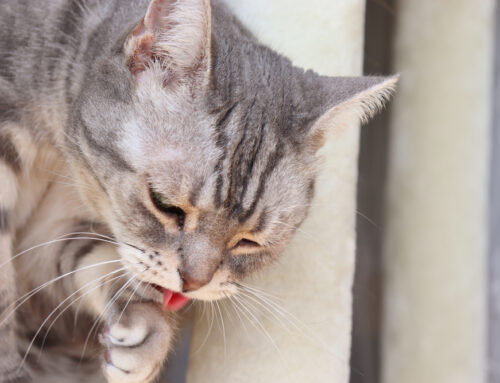Understanding the Fear Behind Separation Anxiety in Pets
What feels like a simple goodbye to you can feel like a terrifying abandonment to your pet. Separation anxiety often develops when pets are overly attached to their owners or have fearful experiences when alone, leading to panic behaviors whenever they’re by themselves. Recognizing this as a genuine behavioral health issue- not a discipline problem- is the first step in helping your pet feel safe and secure, even in your absence.
At Greenfield Veterinary Clinic in Milwaukee, our experienced team specializes in creating low stress experiences and providing behavioral support that helps anxious pets learn to relax when home alone.
What Separation Anxiety Looks Like in Dogs and Cats
Separation anxiety is a behavioral condition triggered by distress when an animal is left alone. Unlike simple boredom or occasional mischief, true separation anxiety in pets causes genuine panic that manifests in predictable, distressing ways.
Common signs include:
- Excessive barking, howling, or whining that begins immediately after departure
- Destructive behavior focused on exit points like doors and windows
- House soiling despite being housetrained
- Pacing, drooling, or trembling
- Attempts to escape that result in self-injury
Cats can also experience separation anxiety, though their symptoms often look different. They may vocalize excessively, over-groom to the point of hair loss, refuse to eat when alone, or eliminate outside the litter box. Some cats become withdrawn or hide, while others become clingy and follow their owners from room to room.
Understanding these behaviors as fear responses rather than defiance changes how we approach treatment.
Our wellness and preventative care includes behavioral evaluations that help identify anxiety triggers and create management plans tailored to your pet’s needs.
Why Some Pets Struggle When Left Alone
Multiple factors contribute to separation anxiety, and understanding the root cause helps guide treatment. Changes in routine, such as a new work schedule or a family member leaving home, can trigger anxiety in previously confident pets. Moving to a new house disrupts familiar scents and routines, leaving pets feeling insecure.
Behavioral problems in dogs often stem from early experiences. Pets adopted from shelters or those who experienced abandonment may develop hyperattachment to their new owners. Traumatic events like extended boarding or hospitalization can also trigger lasting anxiety.
Poor socialization of puppies and kittens during critical developmental periods increases the risk of anxiety disorders later in life. Pets who never learned to be alone gradually or who experienced distress during early separations are more likely to struggle as adults.
Prevention starts with gradual, positive exposure to alone time from an early age. Our team can guide new pet owners through this process during puppy and kitten visits, establishing healthy independence before anxiety patterns develop. If you’re bringing home a new pet, we can help you create a foundation for confidence and security.
Building Confidence Through Positive Training Methods
Humane, reward-based training teaches pets to associate alone time with calmness instead of fear. Positive methods focus on reinforcing desired behaviors rather than punishing anxiety responses, which only increases stress.
Effective techniques include:
- Desensitization: Gradually increasing alone time in small increments, starting with just seconds and building to hours over weeks or months
- Counter-conditioning: Pairing departures with high-value treats or special toys that only appear when you leave
- Departure cues: Teaching pets that certain actions- like picking up keys or putting on shoes- don’t always mean you’re leaving
Consistency matters more than speed. Some pets progress quickly, while others need months of patient practice. Punishment for anxiety-driven behaviors worsens the problem by adding fear of your reaction to their existing distress.
Our behavioral support services help owners implement these techniques correctly, adjusting the plan as needed based on your pet’s progress. With the right approach, most pets learn that being alone is safe and temporary.
Keeping Anxious Dogs Mentally Engaged
Mental stimulation reduces anxiety by giving pets something positive to focus on when owners leave. Enrichment activities build confidence and independence, helping dogs feel capable and secure.
Dog enrichment ideas include puzzle feeders that dispense meals slowly, encouraging problem-solving and extending eating time. DIY cognitive dog toys such as muffin tin games, towel rolls with hidden treats, or frozen Kong toys provide hours of engagement.
Indoor enrichment for dogs also includes scent work, where dogs search for hidden treats throughout the house, and rotation of toys to maintain novelty. Safe chew items dental chews satisfy natural chewing instincts while reducing stress.
Physical exercise before departures helps burn excess energy and promotes relaxation. A tired dog is often a calmer dog, though exercise alone won’t resolve separation anxiety without addressing the underlying fear.
Our team can recommend specific enrichment strategies based on your dog’s age, breed, and anxiety level, helping you create a daily routine that supports emotional health.
Creating a Calming Environment for Cats
Cats benefit from structured environmental enrichment that provides security and mental stimulation. DIY enrichment toys for cats include cardboard boxes with holes for batting toys, paper bag tunnels, or treat-dispensing balls that encourage natural hunting behaviors.
Creating a cat-friendly environment means providing vertical spaces like cat trees or wall-mounted shelves where cats can observe their territory from above. Hiding spots such as covered beds or open carriers offer safe retreats when cats feel overwhelmed. Window perches with views of bird feeders provide passive entertainment during alone time. Some cats benefit from having another feline companion, though this should be considered carefully based on individual personality. Others do better as solo pets with abundant environmental enrichment.
Medical Support for Severe Anxiety
When training and enrichment aren’t enough, medical interventions can help manage severe separation anxiety.
Options include:
- Pheromone diffusers: Products like Adaptil for dogs and Feliway for cats release calming scents that reduce anxiety
- Nutraceuticals: Supplements containing L-theanine, alpha-casozepine, or tryptophan support relaxation without prescription requirements
- Anti-anxiety medications: Prescription options such as fluoxetine or clomipramine help regulate brain chemistry in pets with severe, persistent anxiety
These interventions work best alongside behavioral modification, not as replacements. Medication can reduce anxiety enough for pets to engage with training, while training provides long-term coping skills.
Our in-house diagnostics allow us to rule out medical conditions that mimic or worsen anxiety, such as thyroid disorders or chronic pain. We’ll work with you to determine whether medical support is appropriate for your pet’s situation.

Practical Steps for Daily Success
Creating routines that minimize stress helps anxious pets feel more secure. Practice short departures throughout the day, leaving for just minutes at first and gradually extending the time. This teaches pets that you always return.
Use consistent cues and calm energy when leaving and arriving home. Dramatic farewells and enthusiastic greetings reinforce the idea that departures and arrivals are significant events worth anxiety. Instead, keep transitions low-key and matter-of-fact.
Provide physical exercise before leaving to reduce pent-up energy. A morning walk or play session helps dogs settle more easily once alone. Ensure cats have interactive play sessions that simulate hunting behaviors, promoting natural tiredness.
Avoid punishing anxiety-driven behaviors like house soiling or destruction. These actions stem from panic, not disobedience, and punishment increases fear. Instead, focus on preventing situations that trigger anxiety while gradually building tolerance.
Progress takes time, and setbacks are normal. Some pets improve within weeks, while others need months of consistent work. Patience and partnership with your veterinary team make the difference between frustration and success.
Some pets simply do better away from home when you need to be gone. Our boarding services provide a safe, supervised environment with built-in enrichment and veterinary oversight- helping anxious pets stay calm, comfortable, and cared for until you return.
Helping Your Pet Feel Safe and Secure
Separation anxiety is treatable through patience, structure, and veterinary partnership. Most pets can learn independence while maintaining emotional security when owners recognize anxiety as a genuine health concern and commit to gradual, positive interventions.
At Greenfield Veterinary Clinic, voted Best in Milwaukee, we treat clients like family and provide deeply personal medicine that addresses both physical and behavioral health. Our team can help you create a comprehensive anxiety management plan that fits your pet’s unique needs.
Contact us or request an appointment to discuss behavioral support for your anxious pet. If you’re experiencing an urgent situation during our open hours, our emergency services can help stabilize your pet and begin immediate intervention. If your pet shows signs of distress when left alone, don’t wait for the problem to resolve on its own- we’re here to help.







Leave A Comment